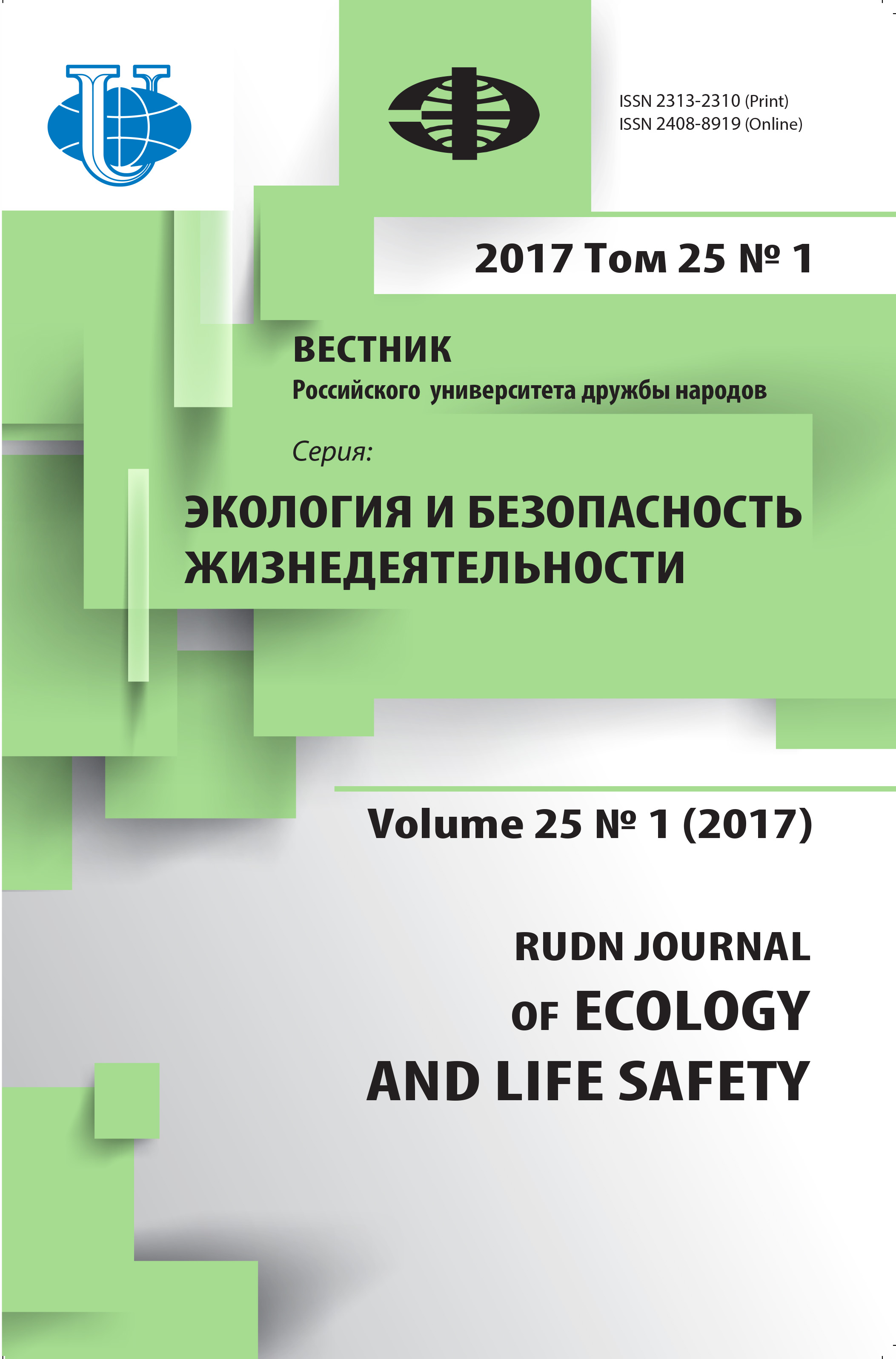MODELLING OF RADIO ECOLOGICAL PROCESSES
- Authors: Pavlova SA1
-
Affiliations:
- The Russian Academy of National Economy and Public service at the President of the Russian Federation
- Issue: Vol 25, No 1 (2017)
- Pages: 116-123
- Section: Articles
- URL: https://journals.rudn.ru/ecology/article/view/16047
- DOI: https://doi.org/10.22363/2313-2310-2017-25-1-116-123
Cite item
Full Text
Abstract
High absorption ability of water plants makes them ideal test objects for quantitative and qualitative determination of anthropogenic chemical loads to the pond.In modelling the radioecological processes of great importance are the methods of logical descriptions, which use, if you cannot find a mathematically precise dependencies. In the case of radioactive contamination of ecosystems, gathering necessary for the calculation of the model data to predict the situation.
About the authors
S A Pavlova
The Russian Academy of National Economy and Public service at the President of the Russian Federation
Author for correspondence.
Email: s_pavlova@mail.ru
PhD, Doctor of Biological Sciences, Professor of the Department of Natural Resources and Protection of the Environment management of the Russian Academy of National Economy and Public Administration under the President of the Russian Federation
pr. Vernadskogo, 82/5, Moscow, Russia, 119571References
- Ivahnenko A.G. The continuity and steptype behaviour. Kiev: Naykova dymka; 1990. (In Russ)
- Kytlaxmetov J.A. The theoretical radio ecology. Кiev: Fitocosiocenter; 2015. (In Russ)
- Vinberg G.G., Anisimov S.I. Mathematical model of a water ecosystem. Photosynthesized systems of high efficiency. М.: the Science; 1966. (In Russ)
- Beljaev V.I., Hudoshina M.U. Bases of logicinformation modelling of difficult geosystems. Kiev: Naykova dymka; 1989. (In Russ)
- Pavlova S.A. Modelling schemes of a radio ecological situation in the animal industries, defined by a logicinformation technique in economy of the Gomel area after failure on the Chernobyl atomic power station. The master’s thesis author’s abstract. Kazan, VNIVI; 1997. (In Russ)
- Pavlova S.A. The factor of radiation — radio biological, radio ecological effects. Simferopol: Publishing center KGMU; 2000. (In Russ)
- Pavlova S.A. The anthropogenous of pollution of the sea environment. The St.Petersburg un y trade unions. The Sevastopol branch. 2002.
















